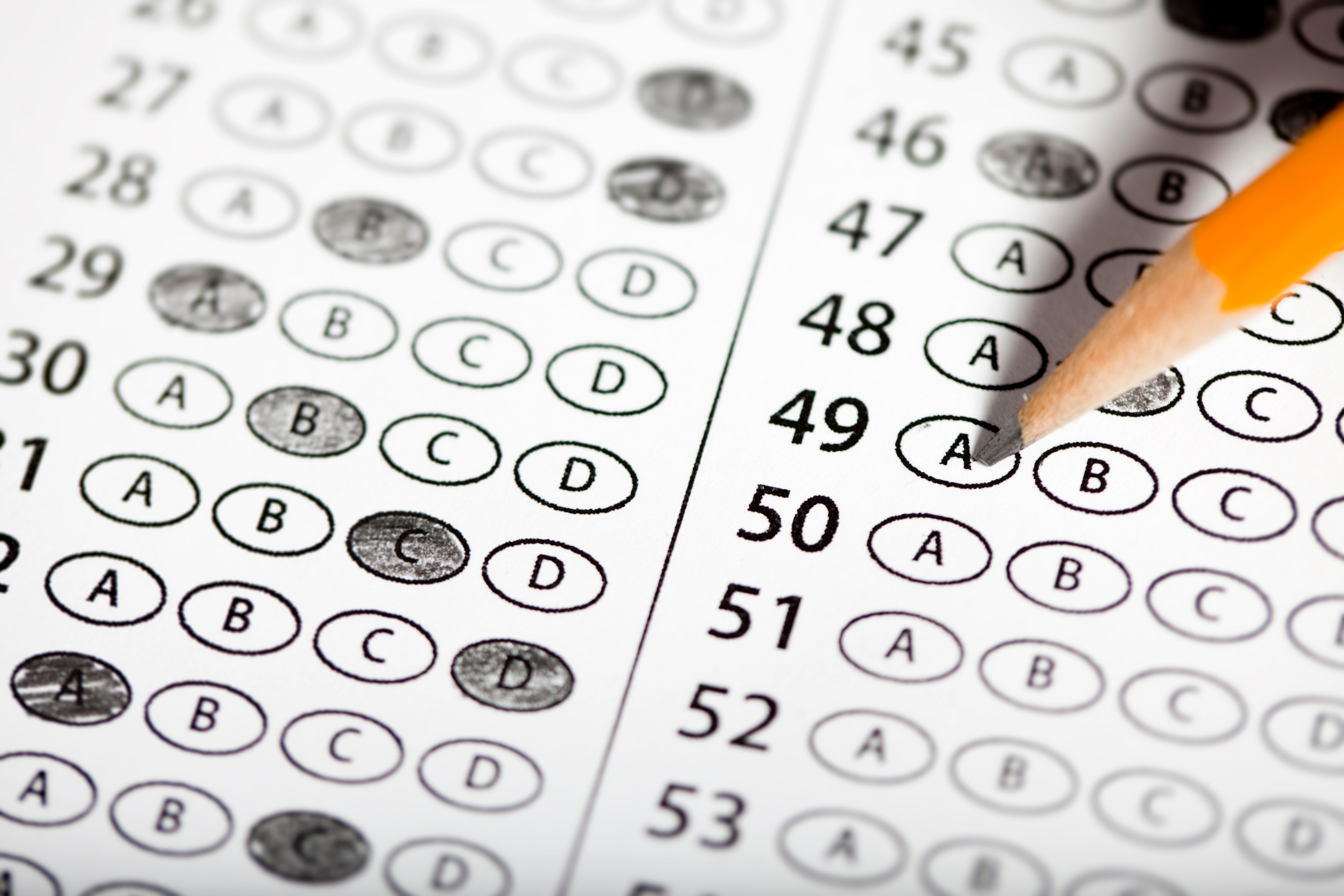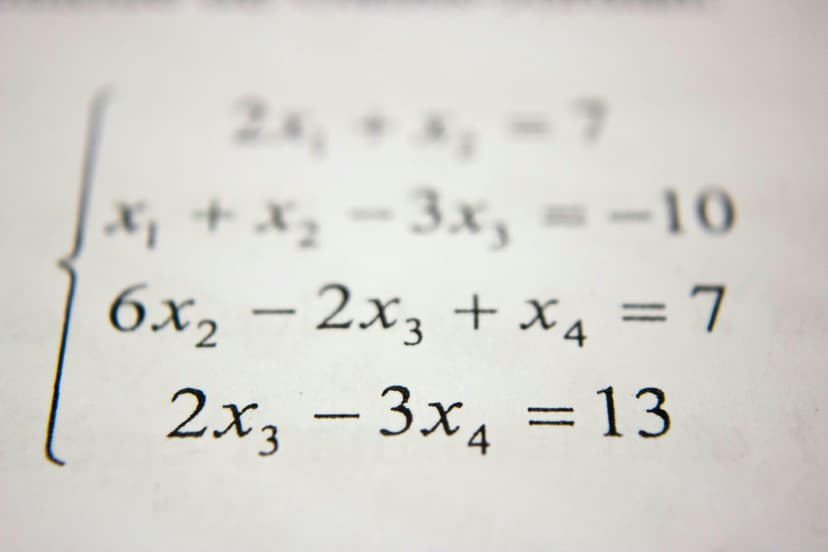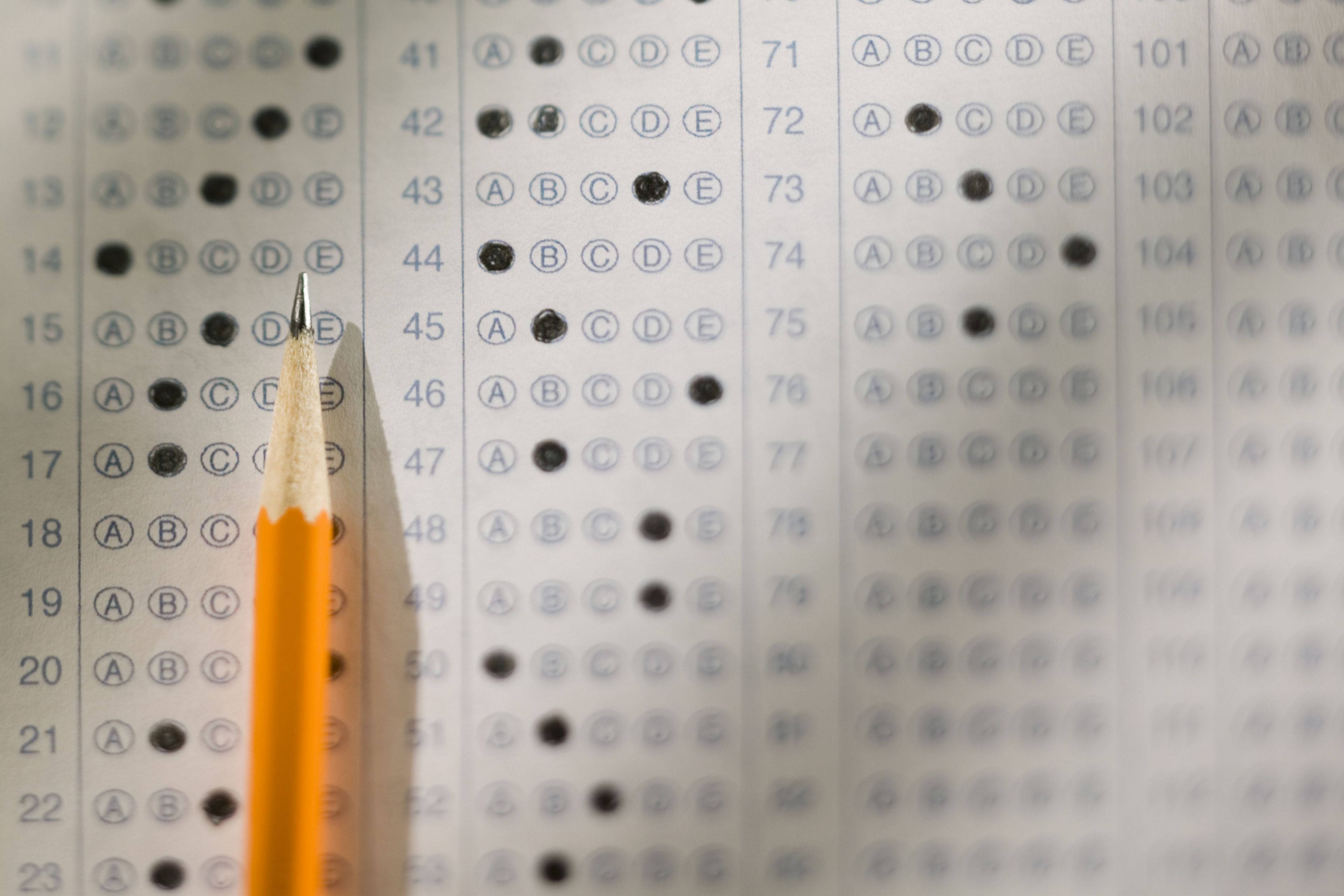GMAT Focus Score Chart — With Percentiles (2025)
Understand your GMAT Focus score with this expert-created 2025 score chart. Learn how section scores convert and what a competitive score really means.

By Mihir G.
Custom GMAT Strategy | 765 Score (100th Percentile) | Chicago Booth Admit
Posted October 14, 2025

Join a free event
Learn from top coaches and industry experts in live, interactive sessions you can join for free.
Table of Contents
What is the GMAT?
Understanding your GMAT Focus score is crucial for aspiring MBA program candidates. In this guide, I'll break down the GMAT Focus Edition scoring system, explain how section scores are calculated, and give you insights into how to interpret your results to improve your admissions chances.
The GMAT Focus Edition represents a significant change from previous versions of the GMAT exam. It offers a faster, more streamlined process while still providing valuable insights into your abilities. With a total GMAT score range from 205 to 805 and sections covering Quantitative Reasoning, Verbal Reasoning, and Data Insights, it's more important than ever to understand what your score means.
I am a professional GMAT Focus tutor with a score of 765 (100th percentile) and a results-driven approach to test preparation. With years of experience helping students improve their scores, ranging from 685 to 715, I focus on strategic test-taking techniques, time management, and a personalized study plan tailored to each student’s strengths and weaknesses.
Understanding the GMAT scoring scale is essential for setting realistic goals and crafting a strong MBA application. With the transition to the GMAT Focus Edition, it’s more important than ever to know how your score compares to past versions and what it means for your admissions chances. In this article, I break down the GMAT Focus scoring system and how to interpret your results to maximize your application potential.
Read: GMAT vs. GRE for Business School–Which Should You Take and How to Ace Both
What is the GMAT Focus Edition?
The GMAT Focus Edition is the latest version of the Graduate Management Admission Test (GMAT). This version was introduced by the Graduate Management Admission Council (GMAC) to improve test-taking efficiency while keeping it as a reliable measure of academic potential for prospective students aiming for top business schools.
The test structure is shorter than the traditional GMAT, now lasting 2 hours and 15 minutes, which is 45 minutes shorter than the previous exam. The GMAT Focus Edition has three sections: Quantitative Reasoning, Verbal Reasoning, and Data Insights. Each section lasts for 45 minutes, and test-takers are given the flexibility to change up to three answers per section.
There is no longer a writing portion of the exam, and sections like Geometry and Sentence Correction have been removed. These changes streamline the exam, allowing for a faster and more focused test-taking experience.
GMAT Focus Score Breakdown
The GMAT Focus Edition uses a new scoring scale. Instead of the traditional 200-800 score range, the GMAT Focus has a total score range of 205 to 805, with each section scoring between 60 and 90. This scoring system is computer-adaptive, meaning the difficulty of questions adjusts based on your previous answers. As you answer questions correctly, you’ll be asked more difficult questions, making your final score a reflection of both the number of questions you answer correctly and their difficulty.
Here’s how the sections break down:
- Quantitative Reasoning: 21 questions testing your knowledge of algebra, arithmetic, and logic.
- Verbal Reasoning: 23 questions evaluating critical thinking, reading comprehension, and reasoning skills.
- Data Insights: 20 questions designed to assess your ability to analyze and interpret data, and make decisions based on that analysis.
What is a Good GMAT Score?
Determining a good GMAT score depends largely on your goals and the business schools you're targeting. In general, top MBA programs like Harvard Business School, Stanford GSB, and MIT Sloan typically expect GMAT test takers to have a score of 700 or higher. However, the average GMAT score for admitted applicants to top business schools is usually around 720–740, placing you in the 90th percentile or higher.
Most MBA programs release the average GMAT score of each year’s entering class, so check the GMAT scores of your target schools to make sure your score is considered competitive. You want to at least hit the average score of the most recent entering class, though above the average is preferable.
It is important to note that GMAT scores alone won’t guarantee you a spot in any program. Admissions committees will also look at other factors such as your GPA, work experience, and recommendation letters. For most Graduate Management Admission Test candidates, a score of 650 to 700 is considered competitive for many schools, though you'll want to aim higher if you're targeting the most competitive programs. Below 650, and you might struggle to be considered for the top-tier schools.
If you’re having trouble reaching your score, don’t give up! Book a free intro call with me and let's chat about how we can get your score up, based on your specific strengths and weaknesses.
GMAT Structure: Previous GMAT vs. GMAT Focus
The traditional GMAT exam was three hours long, consisting of four sections: Verbal Reasoning, Quantitative Reasoning, Analytical Writing Assessment (AWA), and Integrated Reasoning. Scores ranged from 200 to 800, based on Quantitative and Verbal scores alone.
The new GMAT Focus Edition is more streamlined, lasting just 2 hours and 15 minutes. It includes three sections: Quantitative Reasoning, Verbal Reasoning, and Data Insights. Each section is 45 minutes long, and scores for each range from 60 to 90. The total composite score now ranges from 205 to 805.
The exam is computer-adaptive, meaning the difficulty of questions adjusts based on your previous answers. If you answer correctly, you’ll face more difficult questions. This adaptive nature also affects how your performance on one section can influence the following section's difficulty.
You can choose the order of sections at the start, but once selected, it cannot be changed. A 10-minute break is offered between sections 1 and 2 or 2 and 3.
After completing the test, you’ll receive an official score report within 1-3 business days (or up to 20 minutes). This report includes section scores for Quant, Verbal, and Data Insights, as well as your overall score.
Key Highlights:
- GMAT Focus is 2 hours 15 minutes, 45 minutes shorter than the old GMAT.
- The test consists of three sections: Quantitative Reasoning, Verbal Reasoning, and Data Insights.
- No writing section, and Geometry/Sentence Correction questions are removed.
- Composite score range: 205-805; section scores: 60-90.
- You can change up to three answers per section.
- An enhanced score report is now included for free.
Average GMAT Score by School
Different business schools have varying GMAT score ranges for their accepted applicants. Here are the average GMAT scores of some of the top MBA programs:
- Harvard Business School: 730
- Stanford GSB: 738
- Wharton (University of Pennsylvania): 733
- MIT Sloan: 730
- Columbia Business School: 729
These scores reflect the median GMAT score for each program. Schools like Harvard often report the median GMAT score, while others report the average GMAT score. For the GMAT Focus Edition, most business schools are still reporting against the old GMAT scale, so direct GMAT Focus score conversion data is not yet available.
You can use the GMAT total score from your GMAT Focus test and check how it corresponds to the percentile rankings to understand how your score compares to the average GMAT score for these schools.
Note that GMAT FE data is not available since the test was very recently released. You can find a table to convert the old GMAT scores to the FE scores below.

MBA Application Checklist
Download a free, customizable MBA application checklist to stay organized at every part of the process.
GMAT Percentiles: What They Are and How to Interpret Them
When comparing your GMAT score to the national average, you can utilize the percentile rankings of a GMAT score chart to see how your score compares to the scores of other test-takers. For example, if your ranking is in the 80th percentile, that means 80% of test-takers scored lower than or equal to you. If your ranking is in the 65th percentile, you scored better than 65% of test-takers.
Use the GMAT score chart below to find the corresponding percentile rankings for your GMAT score. If you haven’t taken the GMAT yet but would like to estimate your percentile ranking, try this online GMAT percentile ranking calculator.
GMAT Score Chart – Total Score
| Percentile Ranking | GMAT Focus Score | Old GMAT Score |
|---|---|---|
| 100.0% | 805 | 800 |
| 100.0% | 795 | 790 |
| 100.0% | 785 | 790 |
| 100.0% | 785 | 790 |
| 99.9% | 775 | 780 |
| 99.9% | 765 | 780 |
| 99.9% | 755 | 780 |
| 99.8% | 755 | 780 |
| 99.7% | 745 | 770 |
| 99.5% | 735 | 770 |
| 99.4% | 735 | 770 |
| 99.2% | 725 | 760 |
| 98.7% | 715 | 760 |
| 98.6% | 715 | 760 |
| 98.1% | 705 | 750 |
| 97.9% | 695 | 750 |
| 96.9% | 695 | 740 |
| 96.7% | 685 | 740 |
| 96.1% | 685 | 730 |
| 95.2% | 675 | 730 |
| 94.0% | 675 | 720 |
| 93.2% | 665 | 720 |
| 92.6% | 665 | 710 |
| 89.6% | 655 | 710 |
| 89.3% | 655 | 700 |
| 86.7% | 645 | 700 |
| 85.1% | 645 | 690 |
| 83.5% | 635 | 690 |
| 82.7% | 635 | 680 |
| 80.1% | 625 | 680 |
| 80.1% | 615 | 680 |
| 78.3% | 615 | 670 |
| 74.5% | 615 | 660 |
| 74.5% | 615 | 650 |
| 71.5% | 605 | 650 |
| 70.7% | 595 | 650 |
| 65.3% | 595 | 640 |
| 64.8% | 585 | 640 |
| 62.8% | 585 | 630 |
| 62.1% | 585 | 620 |
| 58.9% | 575 | 620 |
| 55.8% | 575 | 610 |
| 55.1% | 565 | 610 |
| 52.7% | 565 | 600 |
| 51.4% | 555 | 600 |
| 47.8% | 555 | 590 |
| 46.7% | 555 | 580 |
| 44.3% | 545 | 580 |
| 43.8% | 545 | 570 |
| 41.1% | 535 | 570 |
| 38.2% | 535 | 560 |
| 37.9% | 525 | 560 |
| 35.6% | 525 | 550 |
| 35.0% | 515 | 550 |
| 32.3% | 515 | 540 |
| 30.8% | 515 | 530 |
| 28.5% | 505 | 530 |
| 28.5% | 495 | 530 |
| 27.3% | 495 | 520 |
| 25.1% | 495 | 510 |
| 24.3% | 485 | 500 |
| 23.0% | 485 | 500 |
| 22.4% | 485 | 490 |
| 21.1% | 475 | 490 |
| 19.2% | 475 | 480 |
| 18.8% | 475 | 470 |
| 17.6% | 465 | 470 |
| 17.1% | 465 | 460 |
| 15.3% | 455 | 460 |
| 14.1% | 455 | 450 |
| 13.9% | 445 | 450 |
| 12.8% | 445 | 440 |
| 12.7% | 435 | 440 |
| 11.5% | 435 | 430 |
| 10.4% | 435 | 420 |
| 10.4% | 435 | 410 |
| 9.4% | 425 | 410 |
| 9.4% | 425 | 400 |
| 8.5% | 415 | 400 |
| 7.7% | 415 | 390 |
| 7.5% | 415 | 380 |
| 6.9% | 405 | 380 |
| 6.7% | 405 | 370 |
| 6.2% | 395 | 370 |
| 5.6% | 395 | 360 |
| 5.3% | 395 | 350 |
| 4.7% | 385 | 350 |
| 4.7% | 375 | 350 |
| 4.2% | 375 | 340 |
| 3.7% | 375 | 330 |
| 3.7% | 375 | 320 |
| 3.3% | 365 | 320 |
| 3.3% | 365 | 310 |
| 2.7% | 355 | 310 |
| 2.5% | 355 | 300 |
| 2.4% | 345 | 300 |
| 2.2% | 345 | 290 |
| 2.2% | 345 | 280 |
| 2.1% | 335 | 280 |
| 1.8% | 335 | 270 |
| 1.7% | 335 | 260 |
| 1.6% | 335 | 250 |
| 1.4% | 325 | 250 |
| 1.3% | 315 | 250 |
| 1.0% | 315 | 240 |
| 1.0% | 305 | 240 |
| 0.9% | 305 | 230 |
| 0.8% | 295 | 230 |
| 0.6% | 295 | 220 |
| 0.6% | 285 | 220 |
| 0.5% | 285 | 210 |
| 0.4% | 275 | 210 |
| 0.4% | 265 | 210 |
| 0.3% | 255 | 210 |
| 0.3% | 255 | 200 |
| 0.2% | 245 | 200 |
| 0.2% | 235 | 200 |
| 0.1% | 225 | 200 |
| 0.1% | 215 | 200 |
| 0.0% | 205 | 200 |
GMAT Score Chart – Verbal
| Percentile Ranking | GMAT Focus Verbal Score |
|---|---|
| 100% | 89-90 |
| 99% | 87-88 |
| 98% | 86 |
| 96% | 85 |
| 91% | 84 |
| 86% | 83 |
| 79% | 82 |
| 70% | 81 |
| 60% | 80 |
| 51% | 79 |
| 42% | 78 |
| 33% | 77 |
| 25% | 76 |
| 19% | 75 |
| 14% | 74 |
| 11% | 73 |
| 8% | 72 |
| 5% | 71 |
| 4% | 70 |
| 3% | 69 |
| 2% | 67-68 |
| 1% | 61-66 |
| 0% | 60 |
GMAT Score Chart – Quantitative
| Percentile Ranking | GMAT Focus Quantitative Score |
|---|---|
| 100% | 90 |
| 97% | 89 |
| 95% | 88 |
| 94% | 87 |
| 92% | 86 |
| 89% | 85 |
| 85% | 84 |
| 81% | 83 |
| 76% | 82 |
| 71% | 81 |
| 66% | 80 |
| 59% | 79 |
| 52% | 78 |
| 46% | 77 |
| 40% | 76 |
| 35% | 75 |
| 29% | 74 |
| 25% | 73 |
| 21% | 72 |
| 17% | 71 |
| 14% | 70 |
| 12% | 69 |
| 9% | 68 |
| 7% | 67 |
| 5% | 66 |
| 4% | 65 |
| 3% | 64 |
| 2% | 63 |
| 1% | 60-62 |
GMAT Score Chart – Data Insights
| Percentile Ranking | GMAT Focus Data Insights Score |
|---|---|
| 100% | 89-90 |
| 99% | 85-88 |
| 98% | 84 |
| 96% | 83 |
| 94% | 82 |
| 90% | 81 |
| 86% | 80 |
| 79% | 79 |
| 73% | 78 |
| 66% | 77 |
| 58% | 76 |
| 51% | 75 |
| 45% | 74 |
| 39% | 73 |
| 34% | 72 |
| 28% | 71 |
| 24% | 70 |
| 20% | 69 |
| 17% | 68 |
| 14% | 67 |
| 12% | 66 |
| 10% | 65 |
| 8% | 64 |
| 7% | 63 |
| 6% | 62 |
| 5% | 61 |
| 4% | 60 |
Read: 10 Best GMAT Tutors
5 Tips to Boost Your GMAT Score and Improve Your Admissions Chances
Understand the Average GMAT Focus Score by School
Each school of business has different expectations for GMAT scores, so it's essential to research the average GMAT Focus score by school. For example, top-tier schools may expect higher scores, typically in the range of 720-740. Knowing where your score fits in compared to class profiles can help you set realistic goals and identify areas to focus on.
Focus on Your Weakest Sections
Most students find that certain sections of the GMAT, like Quantitative Reasoning or Data Insights, need more attention than others. Reviewing your exam results and identifying areas of weakness, such as lower performance in Data Insights, can give you a strategic advantage. If you aim to raise your mean score in those sections, you'll improve your overall score range significantly.
Prepare Using Diagnostic Practice Tests
Before diving into full-blown study sessions, take a diagnostic test to pinpoint the areas where you need improvement. This helps you personalize your study plan and focus on the percentage of questions where you struggle most. GMAC offers free practice tests to simulate the actual test environment and gauge your current GMAT score.
Know the Average GMAT Score at Your Target Schools
Research the average GMAT score of accepted applicants at your target schools. Aim for a score range that puts you at or above the average for your chosen school of business. For example, the GMAT mean score for applicants to schools like Stanford and Harvard can be around 730-740. Striving for a high GMAT score will put you in a more competitive position during admissions.
Retake the GMAT if Necessary
If your first attempt doesn’t meet your target score, consider retaking the exam. The GMAC allows up to five attempts per year, so use the opportunity to improve your performance. Many candidates retake the GMAT to boost their scores and enhance their chances of admission to top business schools. This is especially helpful if your GMAT score falls just below the range required by your target schools.
For more personalized GMAT prep, work with an expert tutor who can help you determine a target score, create a study plan, and tackle the most challenging portions of the GMAT.
Here are more resources to help you ace your GMAT and navigate the world of business school applications. Check out these articles:
- GMAT Focus Sections: Overview & Structure Breakdown
- How to Study for GMAT: The GMAT Tutor's Guide
- Top 50+ Free Resources for GMAT & GRE Practice
- How Late Can You Take the GMAT/GRE for MBA Applications?
- The 10 Most Common Mistakes in GMAT Exam Prep and How to Avoid Them
The Bottom Line
Achieving a strong GMAT Focus score is your first step toward getting into a top MBA program. With a total score range from 205 to 805, the GMAT Focus Edition allows you to showcase your strengths in Quantitative Reasoning, Verbal Reasoning, and Data Insights. A score of 700 or higher will set you apart, especially for top business schools like Harvard Business School.
While the journey can be challenging, with the right GMAT prep and a focused strategy, you can achieve your target score and take your career to the next level. Stay committed, keep improving, and remember that every step forward brings you closer to your goals.
Ready to Achieve Your Target GMAT Score?
Mihir G. is a GMAT expert and strategic test prep coach who scored a 765 (100th percentile) on the new GMAT Focus Edition. With dual honors degrees in Biochemistry and Plan II from UT Austin, and professional experience at Capital One and Moderna, he brings both analytical rigor and real-world insight to every tutoring session. Mihir helps students master the test through customized, results-driven strategies that go beyond content to focus on timing, logic, and confidence. Book a free intro call with Mihir to get one step closer to your target GMAT score.
FAQs
What is the top 1% GMAT score?
- The top 1% GMAT score is typically 790-805 on the GMAT total score scale, corresponding to the highest percentile rankings. This score places test-takers in the 100th percentile, often seen in top MBA programs like Harvard Business School.
What GMAT scores do schools take?
- Business schools typically accept GMAT scores ranging from 600 to 800. However, top MBA programs like those at Harvard Business School and top business schools usually have an average GMAT score around 730-740, placing applicants in the 90th percentile or higher. Some business schools may accept lower scores if the rest of the application is strong.
Is a 700 GMAT score easy?
- A 700 GMAT score is not considered easy and is above the average GMAT score of 546 from GMAT test takers. It typically places test-takers in the 88th percentile, which is competitive for many MBA programs but might not be enough for top business schools.
What is a top 10% GMAT score?
- A top 10% GMAT score is typically around 720-740 or higher, placing you in the 90th percentile. For top MBA programs, this GMAT score is highly competitive, aligning with the median GMAT score for schools like Harvard Business School and other top business schools.

Written by Mihir
5.0
(20)
Mihir has helped clients get into organizations like:
Browse hundreds of expert coaches
Leland coaches have helped thousands of people achieve their goals. A dedicated mentor can make all the difference.













